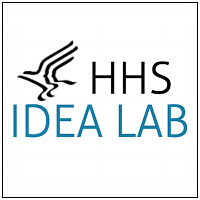 By Jared Smith, HHS Idea Lab
By Jared Smith, HHS Idea Lab
Twitter: @HHSIDEALab
Each year, the government pays over a trillion dollars for health care through the Medicare and Medicaid programs. For perspective, the federal government spends more each year on health care through these two programs than it does on space exploration, education, international aid and all branches of the military combined.
The estimates for 2014 show that more than $77 billion was spent on “improper payments” within Medicare and Medicaid. Spending in this category can include fraud, but can also be coding errors or other mistakes by providers and institutions. To protect these programs and those who depend upon them, it is important to detect and stop the misuse of taxpayer funds.
One of the key agencies involved in this work is the Office of Inspector General (OIG) at the Department of Health and Human Services. One of the core missions at OIG is to protect the integrity of Medicare and Medicaid as well as the health and welfare of program beneficiaries. Statistical sampling plays a critical role in these efforts. In fact, effective oversight would be nearly impossible without statistics, which OIG and many other private and public oversight groups leverage heavily.
OIG provides a tool to help implement statistical sampling in the health care setting; however, the current version of the tool will be impractical to keep up to date in the future, and its layout can be difficult to navigate and understand. That’s why we are running a $28,000 prize competition to help design a new version of the software. As a solver, you will be involved in creating a tool that will better protect our health care system from fraud, waste, and abuse.
The Current Tool Needs Refreshing – How Sampling Works Now
To oversee health care spending, the government relies on a web of federal, state, and private groups who strive to ensure that limited government dollars go to those who need the money most. For example, over a recent six month period OIG reported expected recoveries of more than $2.77 billion dollars. This total includes nearly $554.7 million from audits and $2.22 billion from civil and criminal investigations.
Agencies with limited resources must provide oversight of providers with thousands – often tens of thousands – of claims. A cost efficient approach is to take a statistical sample of claims from a provider and then use the results of the sample to calculate a conservative estimate of any improper payments. When the government uses statistical sampling, it is able to recover the full amount of the estimated improper payment without having to spend tens of thousands of hours reviewing all of the claims (for an example see the following report).
The current sampling tool, RAT-STATS, was created more than 35 years ago to fulfill the need for a simple software solution that develops valid statistical samples and estimates in the health care setting for individuals without technical backgrounds. Since then, RAT-STATS has enabled the government to recover billions of dollars in health care related overpayments. That said, however, the software hasn’t received a major refresh in over 15 years and we are looking to the public to help with the next update.
While the current version of the sampling tool is well validated and produces statistically sound results, its user interface can be difficult to navigate (you can see the software itself here) and the underlying code makes the software impractical to update moving forward. In addition, the current version of the software does not meet federal requirements for accessibility. As a result, we will not be able to continue supporting the software in the long term unless it is replaced with a new version!
A Call for New Solutions
The health care community needs a new, modern version of the software that is easy to use and can be extended in a cost-effective manner. Given the importance of sampling, it is no surprise that there is a demand among oversight agencies for a tool able to produce robust samples that can hold up in court.
To aid in the development of a new package to meet this need, we have posed a challenge to the public: create the foundation for the next version of RAT-STATS. We are looking for a new design that is easy to use, meets the government requirements for accessibility, and can grow over time to account for advances within the field of statistics. The new design does not need to replicate the entire RAT-STATS package, just four select functions.
The individual or group who wins the challenge will receive $28,000 and will have the recognition of creating a critically important oversight tool in what is projected to become the single largest area of government spending in the country.
To learn more or get involved today, visit the official challenge website.
This prize competition was supported and developed through support from HHS Competes – an open innovation program to implement the COMPETES Act and other legal authorities. The program enables HHS and its Divisions to source solutions to tough problems beyond the typical contractor or grantee, to talented individuals and small companies all across the country.
This article was originally published on HHS Idea Lab and is republished here with permission.
